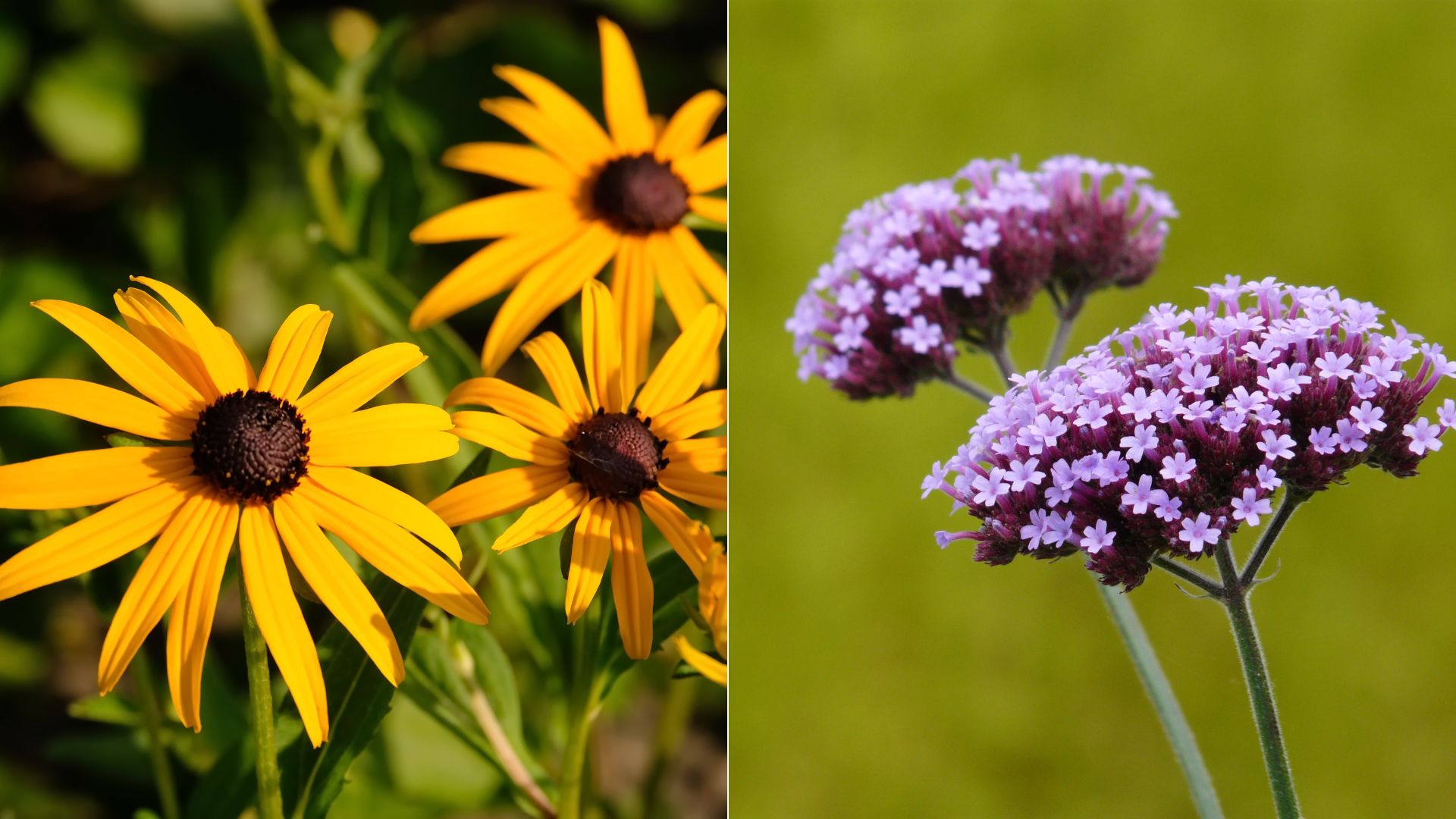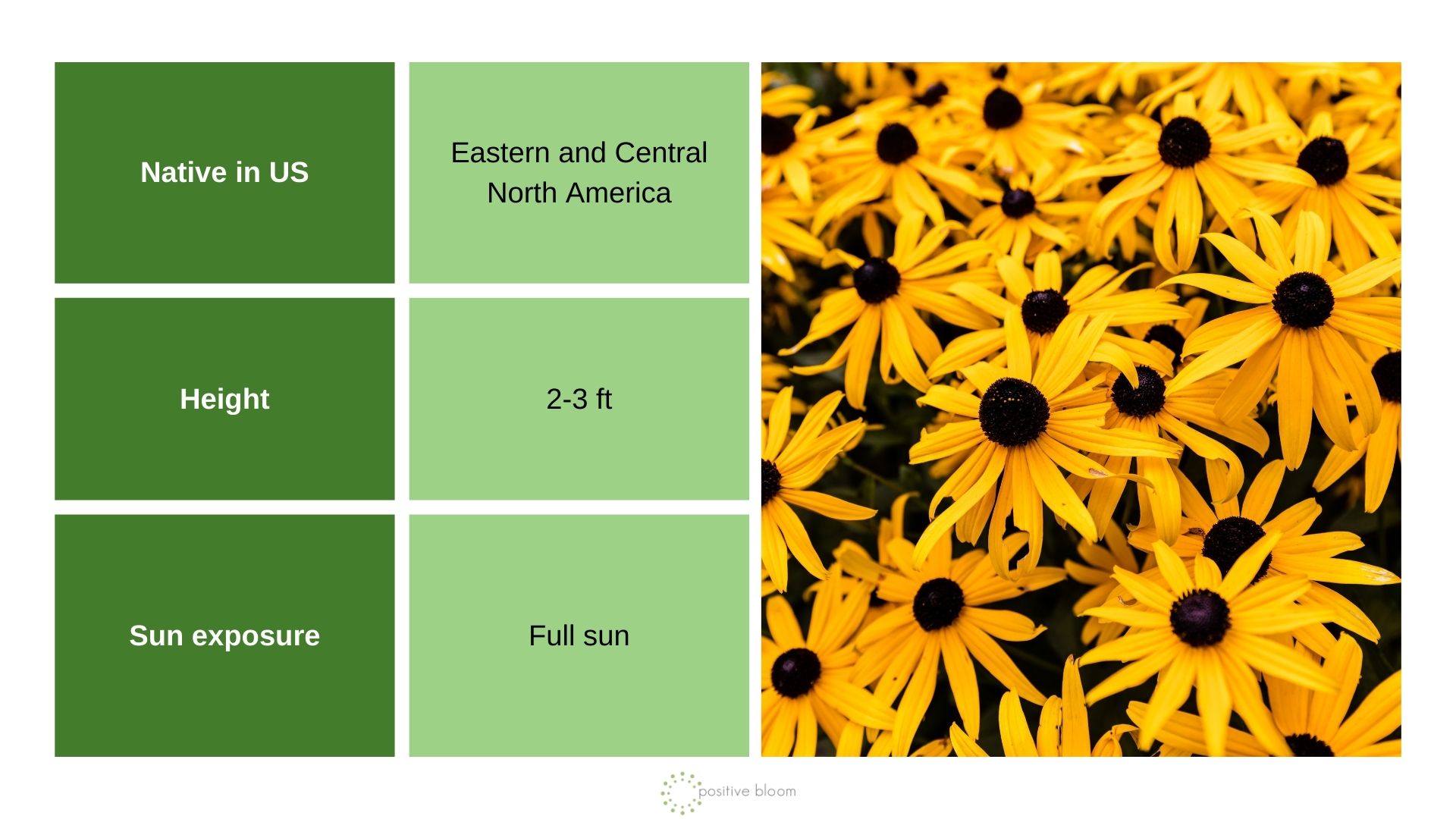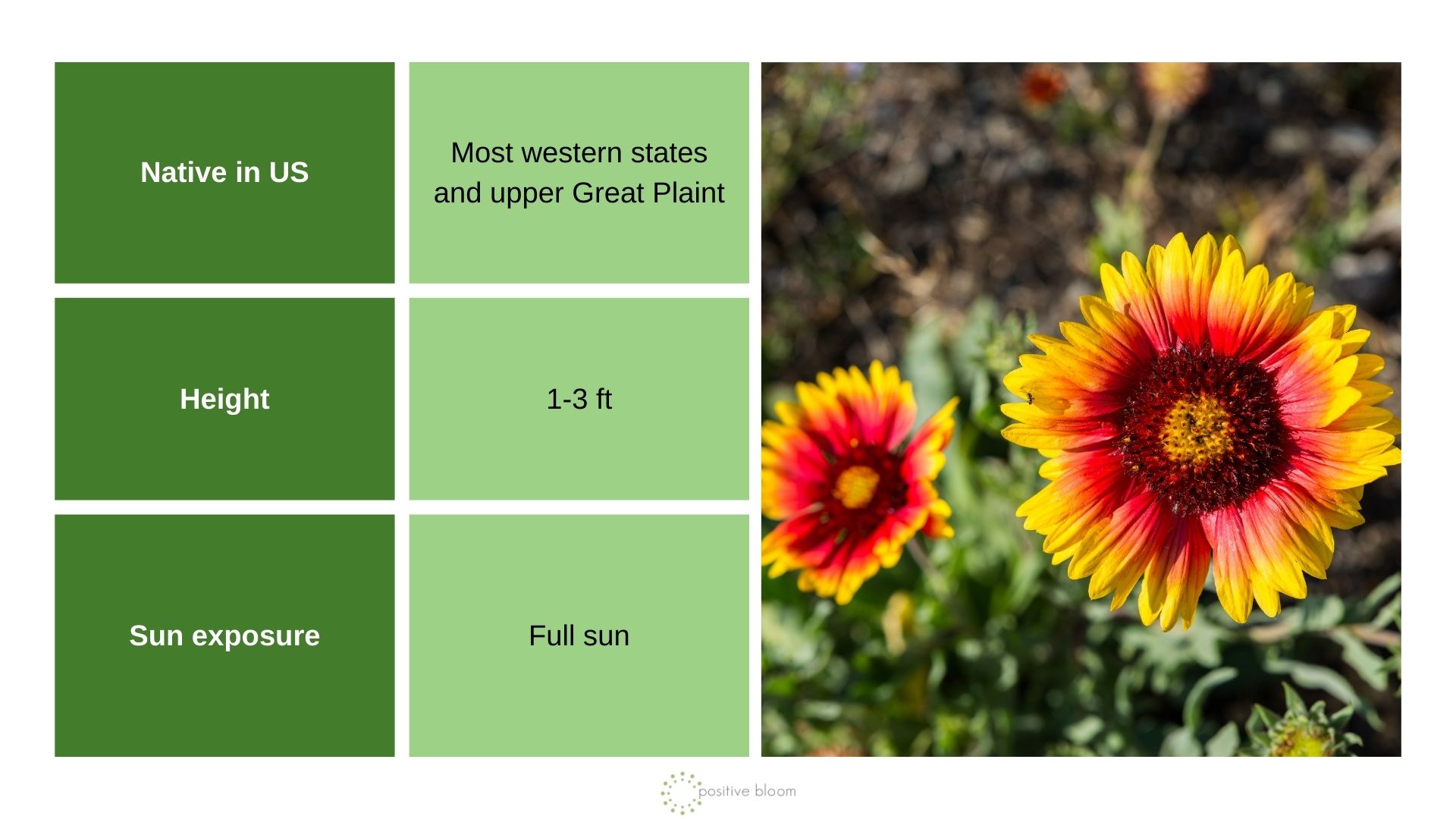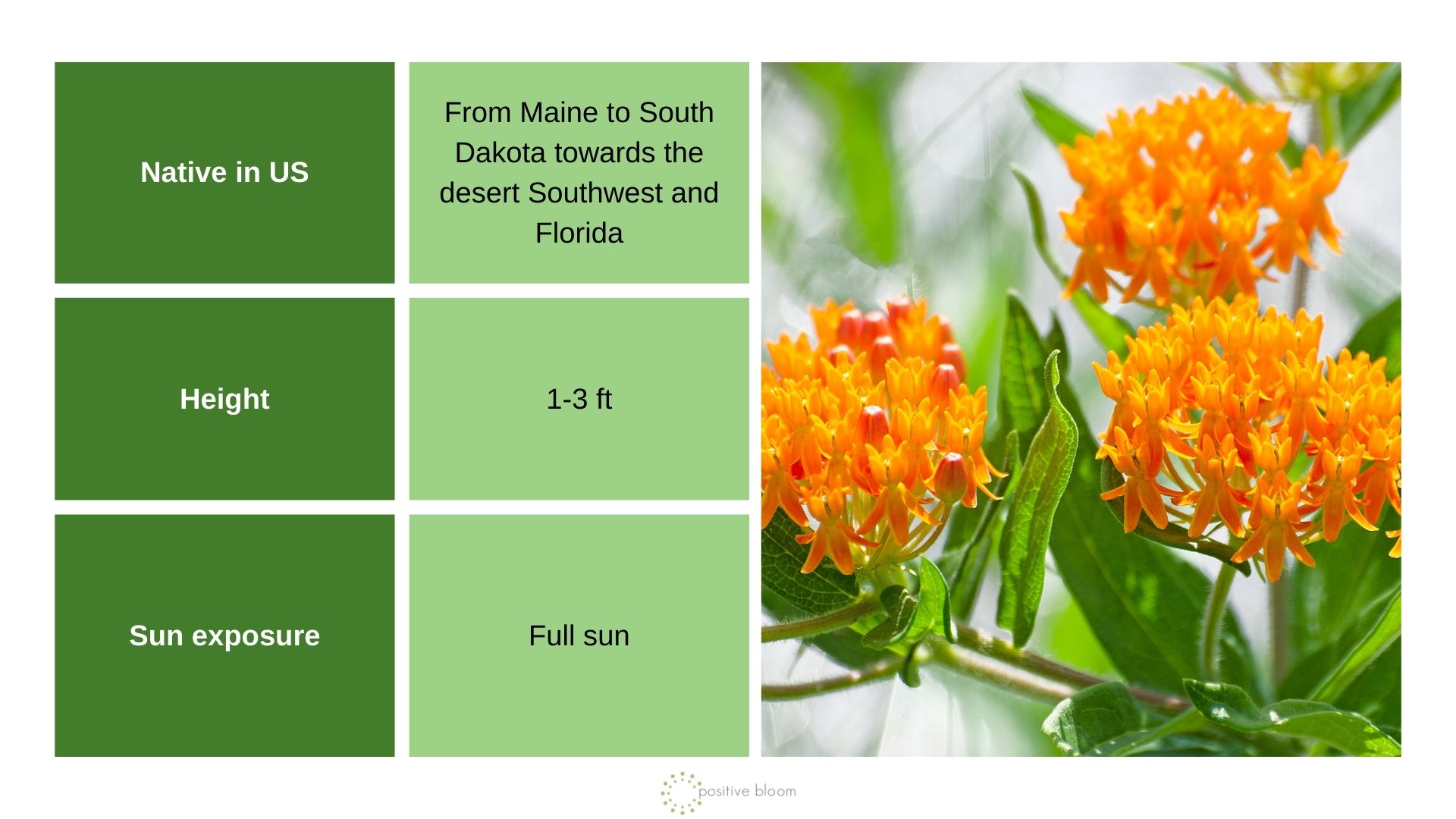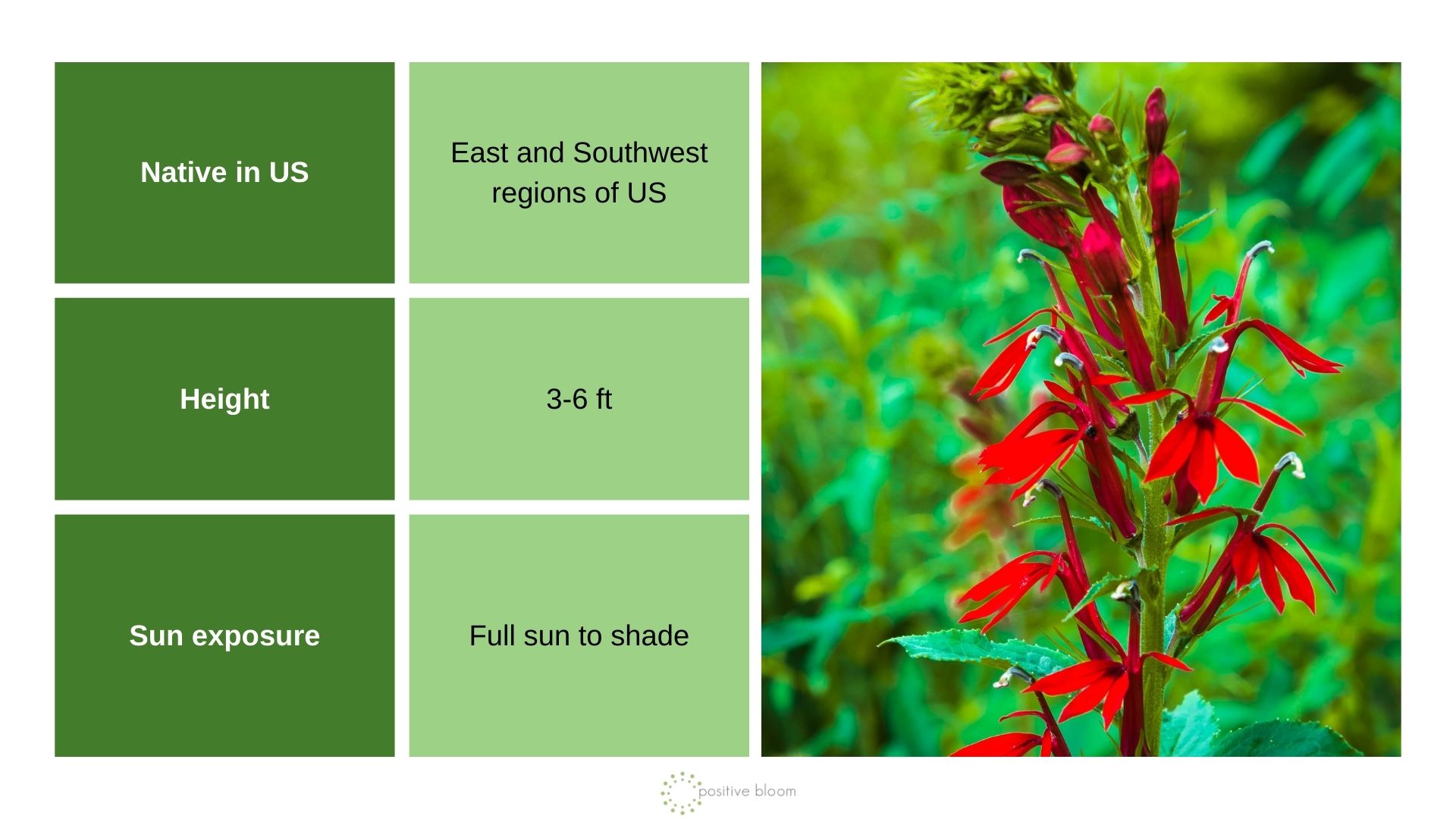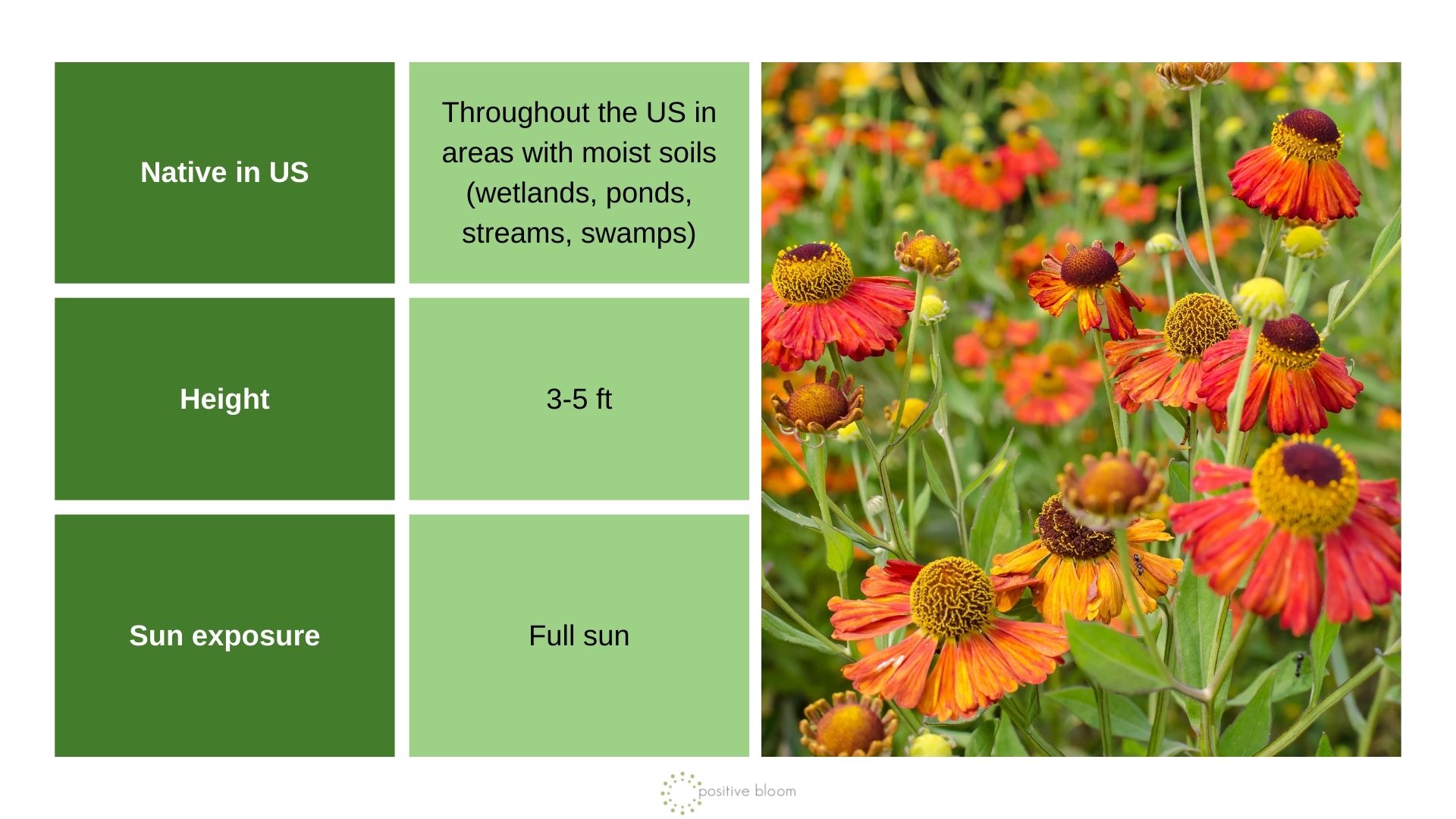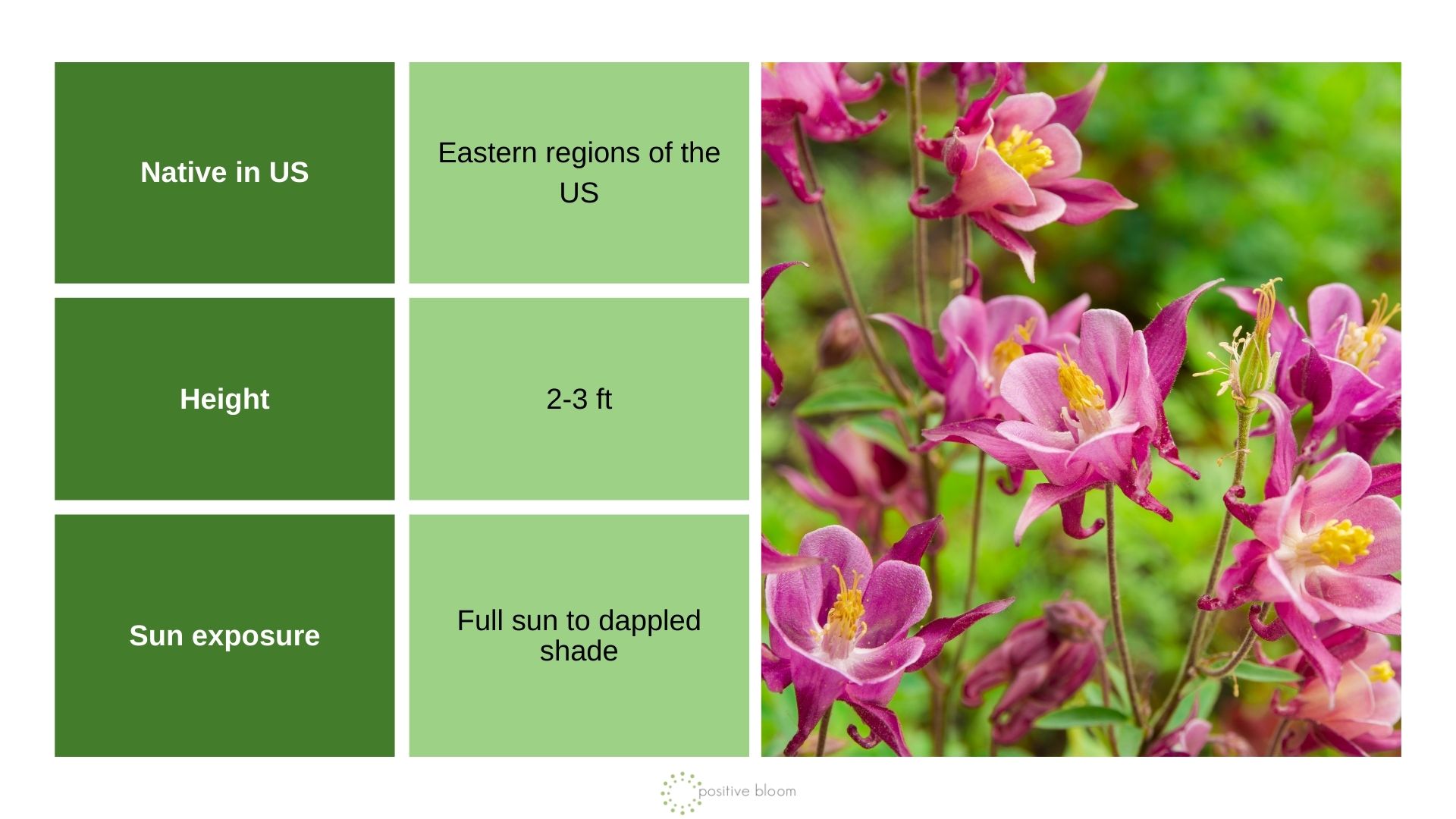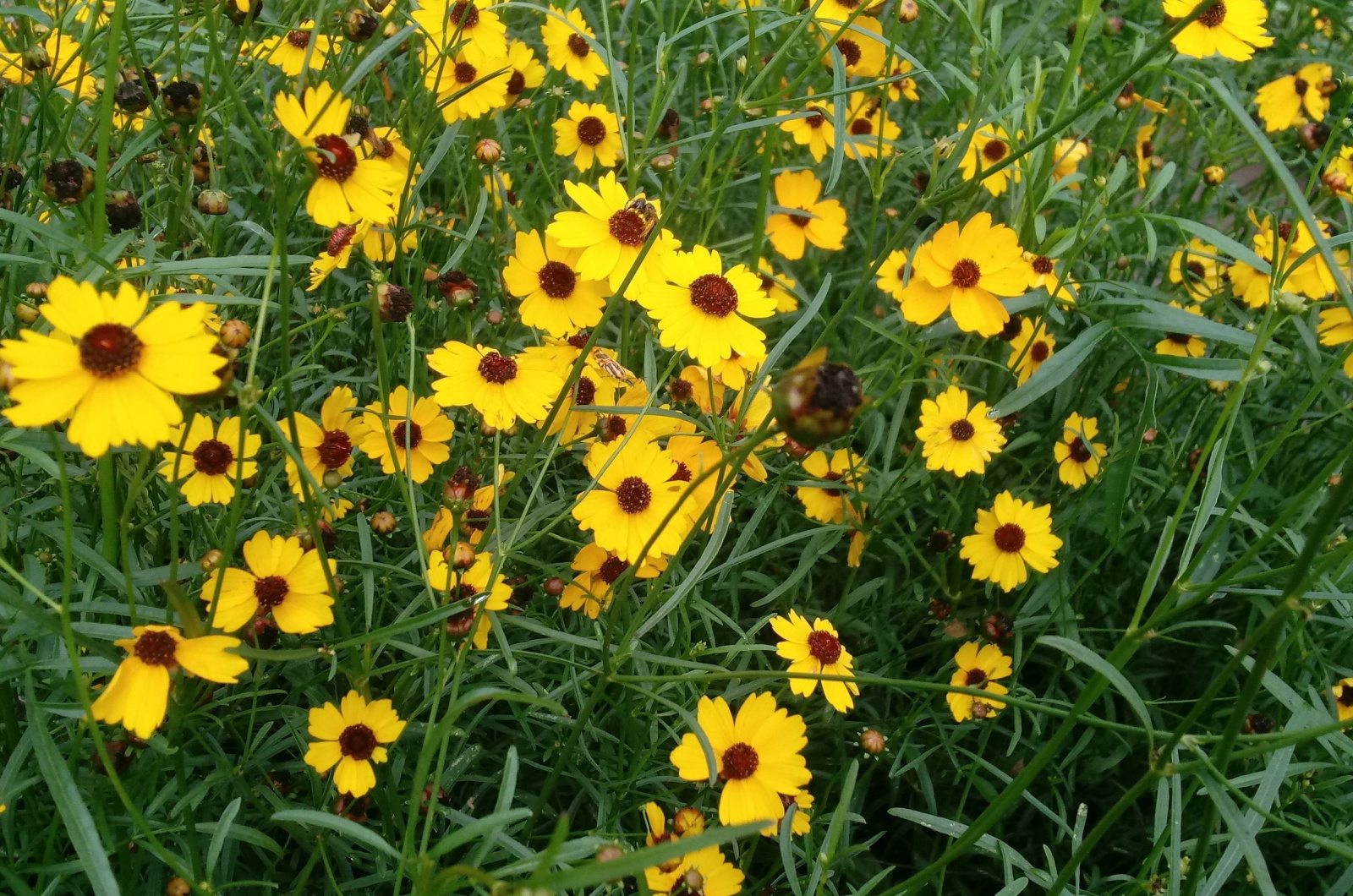Growers around the world love wildflower gardening, and for good reason. These plants self-seed after their blooming cycle finishes and multiply without any effort on your part.
They virtually grow on their own and there’s little you have to do to help them.
The only thing you may want to do is control their growth a bit, but we all cross that bridge when we come to it.
If you want to bring some order into your wild garden, you can collect some seeds from your self-sowing wildflowers and plant them wherever you want.
They’ll pop up in spring and quickly start attracting pollinators, pest predators, and native wildlife to your garden. And there’s nothing more rewarding than seeing bees enjoy your set up.
Here are some native wildflowers you can sow now to enjoy them in spring.
Let’s get started!
1. Black-Eyed Susan
We start off with an absolute beauty. Black-eyed Susan is one of my favorite flowering plants due to its daisy-like, bright yellow petals and dark center.
It produces flowers in summer and fall, after which it goes to seed and spreads itself all around its bed and your garden.
Black-eyed Susan can overcome your garden if you’re not careful. Luckily, there is a way to keep invasive plants from spreading in your yard – growing them in planters.
This wildflower can tolerate a whole host of conditions, but it generally prefers well-drained soils. It is drought-tolerant, so you won’t have to worry about watering it that often.
And if that wasn’t enough, it will attract numerous pollinators while in bloom, and then birds when it goes to seed.
This perennial may have a short lifespan, but it seeds so readily that you won’t miss it any time soon.
2. Blanket Flower
There are countless reasons to grow blanket flowers and yet their blazing shades and the ability to attract pollinators like magnets are at the top of my list.
It’s quite common in prairies and meadows and it self-seeds more than readily. That can pose an issue to some gardeners, especially if it starts choking out other plants.
But it also means you’ll have little worry about its needs.
Simply pull it out if you want to reduce its numbers and deadhead the flowers before they go to seed. Or you can collect the seeds and sow them in October in a more suitable location.
Just make sure it has excellent drainage and remove the spent flowers for another flush of color.
3. Blue Vervain
Blue vervain, or just vervain, is the perfect perennial for fall when it exposes its vibrant blue flower spikes.
It is like a magnet for hummingbirds and butterflies, although various types of bees and bumblebees love to visit it, too.
And what’s more, its great height will give your landscape more depth and structure, while its calming blue shades are perfect for a more relaxing area.
4. Butterfly Weed
Did you know that you can save your pollinators by collecting milkweed seeds? And one species of this plant is butterfly weed.
It is a perfect plant for butterfly and pollinator gardens, but that’s not all it has to offer.
Butterfly weed will reward you with bright orange-yellow blossoms that last from June to August and bring more visual interest to your outdoor decor.
Plant it in a location with full sun and well-drained substrate and it will establish given some time. Butterfly weed will also self-seed, so you won’t have to worry about it ever fully disappearing from your yard.
It can get invasive, though, so you might want to deadhead its spent flowers before they go to seed if you need to keep it in check.
5. Cardinal Flower
This is an absolute beauty, especially in late summer when you can witness the sheer size and vibrancy of the red flower spikes.
It makes a great border plant in woodland gardens and is one of the best flowers for hummingbirds, not to mention bees and butterflies. Of course, it’s not suitable for all insects due to its tubular shape, but these three have adapted and can make the most out of it.
The Cardinal flower flourishes in full sun conditions in colder regions and generally requires dappled or even deeper shade if grown in hotter climates.
Mulch it in winter if you live in an area with harsh conditions during this time of year, and that’s it.
It does tend to stay in its flower bed, but the wind can scatter the smaller seeds and spread the plant around your garden.
6. Fall Sneezeweed
Fall Sneezeweed is on the list of the longest-blooming perennials and will reward you with gorgeous flowers in late summer and fall. It is another plant with blazing yellow-orange flowers that bring so much warmth to your cooling garden.
Bees and butterflies frequently visit Sneezeweed.
And the best part of all is that they only require full sun and well-drained, moist substrate to flourish.
They look amazing in wildflower and meadow gardens, which reflect their natural beauty. And if you don’t want to risk them spreading all over your yard, or you simply don’t know where to plant them, you can always grow them in containers and move them around.
One thing about fall Sneezeweed is that it can get quite tall and may need additional support to prevent it from flopping. But this is a small job to do for a fiery floral reward.
P.S. You can collect its seeds after it finishes flowering and sow them in fall. October works best.
7. Ten-Petal Anemone
Anemones are one of the amazing wildflower plants that look breathtaking in almost every setting. There are varieties that can tolerate shade very well, but the ones native to the US usually do well with a little bit more sunshine.
When sown in October, the plant will start producing purple-red leaves in late winter or early spring that turn greener as the weather warms up. These are followed by gorgeous white, almost greenish, blossoms.
It attracts numerous native pollinators, especially bees and butterflies, and doesn’t require too much care.
The ten-petal anemone can flourish in various conditions, from outcrops to open woodland areas and prairies.
Keep it well-watered but never soggy, expose it to plenty of sunlight, and it will thrive.
8. Wild Columbine
Columbine is a native plant for shade that will thrive in the darker corners of your garden, although it can tolerate full sun as well.
It is one of those woodland flowers that thrive in moist substrates and don’t really need much to spread.
And once spring arrives, you’ll be able to enjoy its vibrant red, bell-shaped blossoms for the next 4-6 weeks.
But that’s not all! It not only gives so much interest to your landscape, but also regrows year after year, which means you won’t have to constantly replant it.
Its tubular flowers also make a great food source for hummingbirds, bees, butterflies, and all other insects that can reach inside them to feed on their nectar.
9. Yarrow
There are numerous benefits of adding yarrow to your garden, such as easy maintenance, ability to serve as a ground cover, attracting beneficial bugs, erosion control, etc.
Yarrow comes in numerous shades, so all you have to decide is whether you like pink, yellow, or white the most.
It can serve as a trap crop and is a great companion plant to almost all flowers and vegetables.
Just make sure to plant it in a loose and loamy soil with great drainage and full sun for the best results. Thin it every couple of years to prevent overcrowding and transplant those parts into some other part of your garden to give it more character and cohesion.
The Easiest Wildflower To Grow
All wildflowers are easy to grow in their native habitat and require virtually no care. That’s because they’re already adapted to that region and the amount of sunlight and rain they get.
For that reason, ten-petal anemone, blanket flower, and winecups make excellent choices for Texas, while yarrow and blue vervain can grow well pretty much anywhere.
Learn how to collect wildflower seeds the right way and sow them in October for a splash of color in spring and summer.
Just make sure to control their growth a bit because they can become aggressive and push out some of your other plants. But planting them in containers can prevent these issues from occurring in the first place.
Florida State’s Wildflower
The official wildflower of my own state, Florida, is tickseed, also known as the Coreopsis. In fact, there’s one species, Coreopsis floridana, that’s only found here and nowhere else in the whole world.
Its blossoms will adorn your garden with their red, orange, yellow, and sometimes pink fiery shades from April to July or early summer through fall, depending on your region.
Tickseed is native in zones 3-8, thrives in full sun, and needs fertile and well-drained soil for optimal growth.
Flowers have many benefits for your yard, from making your landscape more beautiful and elevated to attracting numerous beneficial bugs.
Replacing your lawn with wildflowers has numerous advantages (meadowscaping) and can increase the biodiversity of your garden and save you water at the same time if you go with natives.
Try some of these methods in a small part of your yard and tell us what you think about it!

